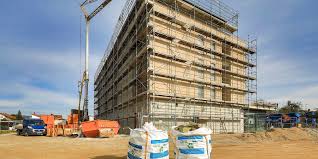In the quest for efficient and sustainable climate control solutions in buildings, thermal inertia emerges as a crucial property of construction materials. This concept affects not only interior comfort but also the energy efficiency of habitable spaces.
What is Thermal Inertia?
Thermal inertia refers to a material's ability to absorb, store, and release heat in response to external temperature fluctuations. It is determined by factors such as the material's specific heat capacity, density, and thermal conductivity. Materials with high thermal inertia tend to maintain more stable temperatures within a space, while those with low thermal inertia fluctuate more rapidly with environmental temperature changes.

Practical Applications
1. Sustainable Construction:
Benefits of High Thermal Inertia Materials: In climates with significant day and night temperature variations, such as desert or mountainous regions, materials like concrete, stone, and adobe are ideal due to their ability to absorb heat during the day and release it slowly at night.
Energy Consumption Reduction: Incorporating materials with high thermal inertia in construction can reduce the need for artificial heating and cooling systems, thereby optimizing energy consumption and operational costs over the building's lifecycle.
2. Architectural Design:
Passive Design Optimization: Architects and designers use thermal inertia as a resource to enhance the passive design of buildings, maximizing solar heat gain during the day and minimizing heat loss at night.
Integration with Natural Ventilation Strategies: Combining high thermal inertia materials with natural ventilation strategies can further improve interior comfort and reduce reliance on mechanical systems.

Real-World Examples
Historical Buildings: Many ancient structures are built with natural materials of high thermal inertia, such as stone and mud, allowing them to maintain comfortable interior temperatures without modern technologies.
Modern Innovations: The development of new construction materials with enhanced thermal inertia properties offers opportunities for more efficient and sustainable buildings in the future.
In summary, understanding and applying the principles of thermal inertia in construction can significantly impact energy efficiency and occupant comfort. By strategically selecting and using materials with high thermal inertia, we can move towards more sustainable and resilient built environments, adapted to changing local and global climatic conditions.
Explore more about how thermal inertia can transform the design and construction of modern buildings towards a more sustainable and efficient future!




Comments